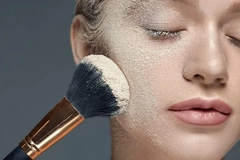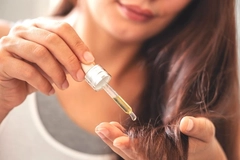European Commission’s PFHxA restriction proposal for cosmetics gains ground
14 Jul 2023 --- The European Commission (EC) has proposed a Union-wide restriction of perfluorohexanoic acid (PFHxA), its salts and related substances, including polymers in cosmetic products, with a transitional period of two years. This substance is a breakdown product of other PFAS substances, which contaminate and persist in the environment.
The proposal has been presented to the member states and will be discussed further in Q4 of 2023. A vote on the proposal in the Registration, Evaluation, Authorisation and Restriction of Chemicals (REACH) Committee could be expected by the end of 2023 or the beginning of 2024, an EC spokesperson tells Personal Care Insights.
The Committee for Risk Assessment previously noted: “PFHxA is not an ingredient of cosmetic products. The presence of PFHxA in cosmetics may be as an impurity in and/or a degradation product of intentionally added PFASs.”
“Additionally, it is likely that PFHxA is dermally absorbed, therefore it has to be considered that cosmetic products may pose an additional relevant source for human exposure.”
Following EU’s PFAS ban
The EC spokesperson clarifies: “Based on the REACH Regulation and Cosmetics Product Regulation, the use of several PFAS is prohibited in the EU, including personal care products and cosmetics.”
“The EC has recently published a proposal to restrict, among others, the use of PFHxA in cosmetic products with a transitional period of two years,” the EC spokesperson notes.
Earlier this year, the EU proposed a restriction drafted by five countries on 10,000 PFAS. The Committees for Risk Assessment and Socio-Economic Analysis are carrying out the evaluations while also ensuring the proposal meets the legal requirements of REACH. PFAS is persistent in the environment and remediation technologies are needed to reduce its effects.
PFAS is persistent in the environment and remediation technologies are needed to reduce its effects.
Majority vote needed
A qualified majority in the REACH Committee is necessary for a positive opinion to support the proposal. Following a positive opinion, the proposal will be subject to a three-month scrutiny period by the European Parliament and the Council before its adoption by the EC.
In addition to PFHxA, 15 other substances have been identified for restriction, including PFOA, PFOS, perfluorononanoic acid, potassium perfluorooctanesulfonate and diethanolamine perfluorooctane sulfonate.
According to Annex XVII to REACH and Annex I to the regulation on persistent organic pollutants, several PFAS substances are prohibited in the EU. The restrictions do not contain derogations for personal care products; therefore, these substances are also banned in cosmetics.
In addition, the Cosmetics Product Regulation prohibits using Carcinogenic, Mutagenic and Reprotoxic (CMR) substances in cosmetics. Several PFAS are classified as CMR and therefore included in Annex II to the CPR.
Persistent environmental toxin
PFAS is mobile in natural environments and concentrations build up quickly. The substance is difficult to remove from wastewater, drinking water and contaminated sites. The exposure to humans is long-term and intergenerational.
PFAS are also known as forever chemicals notorious for their “extremely persistent” nature and their bioaccumulative toxic effects on human health. Even the human biota is also tainted by PFAS exposure. According to the EC, the risks to human health and the environment are not adequately controlled.
Toilet paper is an unexpected source of PFAS detected in wastewater across several continents by researchers at the University of Florida.
The recently published EC proposal suggests non-fluorinated alternatives to PFAS, which are available for most products and are not more expensive than their toxic counterpart.
However, there are difficulties in assessing and developing PFAS alternatives. The EC needs more information on manufacturers producing or using these alternatives. There is ongoing research being conducted about non-fluorinated alternatives to PFHxA.
There is ongoing research being conducted about non-fluorinated alternatives to PFHxA.
Research about non-fluorinated alternatives is ongoing on their dirt and oil resistance, for example, and what application methods and devices are necessary for these alternatives.
Bans around the world
Earlier this year, New Zealand’s Environmental Protection Authority revised its cosmetics regulation to align with European Union’s policy approach and extend consumer protection. It also proposes to ban all PFAS in cosmetic products starting in 2026.
UK-based Cosmetic Toiletry & Perfumery Association shared science-based facts about the controversial use of PFAS in cosmetics. They argue that the chemicals do not make products unsafe as they undergo strict regulation to meet legal safety requirements.
The Washington State Senate passed restrictive legislation to ban PFAS, lead, phthalates, formaldehyde and formaldehyde releasers, and other harmful chemicals used in cosmetics and personal care products in the US state. Studies have shown that women of color are disproportionately exposed to toxic chemicals in cosmetics.
Meanwhile, Intrapore joined chemicals supplier Evonik to expand the reach of its remediation technologies, designed to remove traces of toxic PFAS in soil and groundwater.
By Inga de Jong















